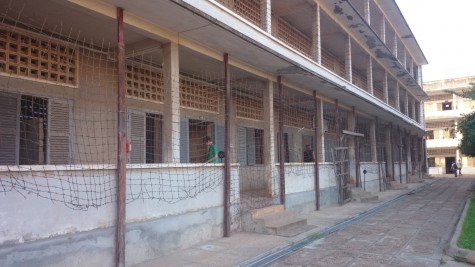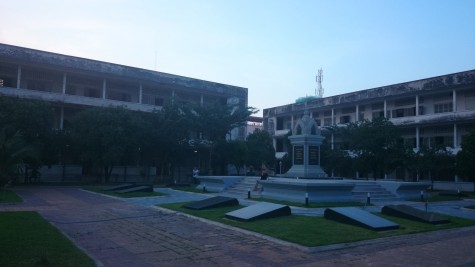Our unofficial poll of four people from two countries reveals that none of us were taught about the Khmer Rouge as part of our formal primary and secondary education. Cindy learned about it after she met a Cambodian as an adult. I learned about it because I saw Pol Pot’s name while reading about Mao Zedong (and had no idea who Pol Pot was). After that, it was just a matter of looking up words in encyclopedias or, later, Googling and Wikipedia.
Here’s the crash course. The Khmer Rouge were Communist revolutionaries who overthrew the former Cambodian regime in 1975. They could be described as Maoist in that they believed the best/purest people were peasants and farmers. The urbane, educated, intellectual types who lived in urban areas were contaminated with foreign elite ideas. On April 17, 1975, the Khmer Rouge forcefully evacuated Phnom Penh, the capital of Cambodia. Residents were forced to move into the countryside to work on farms and re-educated themselves. Similar evacuations occurred in all Cambodian cities.
Things quickly spiraled out of control. Those regarded as sympathetic to the former regime were denounced as traitors. The same classification then applied to foreigners, the literate, or even people with glasses or soft hands. These people were imprisoned, tortured, killed. Anyone fortunate enough to escape this consequence instead slowly withered away on farms. Production stagnated due to unrealistic demands and sheer lunacy. Simply telling people to produce 3x as much rice, for example, does not mean 3x as much rice will be produced. Destroying agricultural machinery because they’re foreign doesn’t help. Killing mechanics or blacksmiths (because they’re educated) who were responsible for maintaining farm equipment also doesn’t help. If someone wasn’t killed during Khmer Rouge, they were definitely starving. In the end, roughly 25% of Cambodians died during the Khmer Rouge’s 3.5 years of insanity. This scar is represented by the present day population structure mentioned in the previous post.
Museums have been erected to memorialize the victims of Khmer Rouge. Perhaps the most striking is the former S21 Prison in the middle of Phnom Penh, where Cindy and I visited after traveling five hours from Battambang. In a former high school, the Khmer Rouge created their most notorious prison, where the undesirables (read, normal people) were taken to be tortured into confessing crimes they never committed and implicate others.
The contrast of the museum is striking. First, it’s right in the middle of a residential area. There are apartment buildings surrounding it. Kitchens have windows that look right into the school/prison/museum. Second, it looks like… a school. If you flashed pictures of it in front of me quickly, I would say I just saw pictures of schools in the Marshall Islands. The only building that doesn’t look strictly like a school building is the above one, which is encased in barbed wire. The Khmer Rouge installed the wire after prisoners started committing suicide by jumping off of the top floors.
If I remember correctly, over 12,000 prisoners were brought to S21. Seven survived. The audio tour didn’t pull any punches. The classrooms still had prison cell blocks, shackles, and blood stains on the floors and walls. Other empty rooms just displayed pictures of former prisoners. It was a tough place to visit.

 Español
Español
